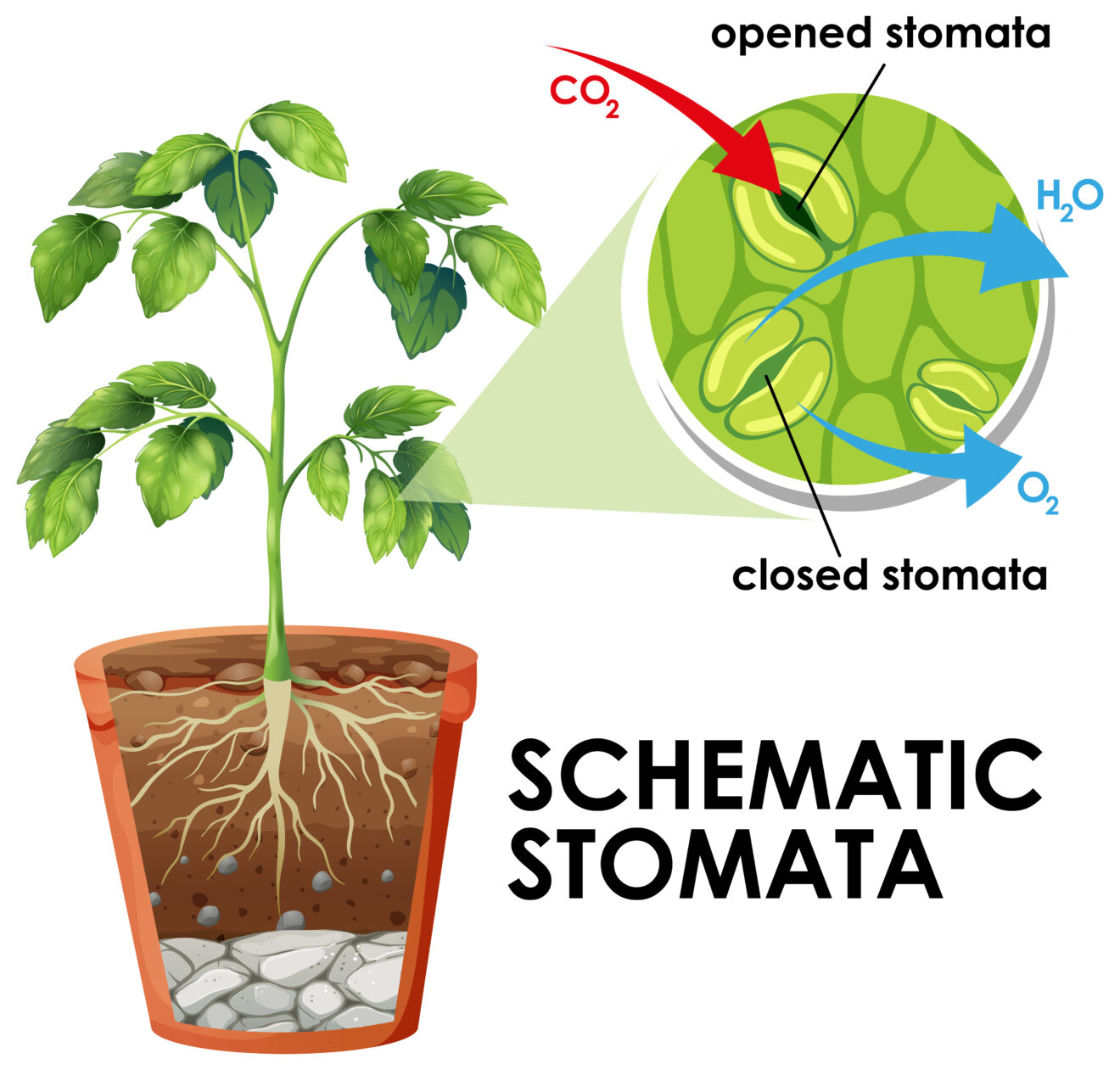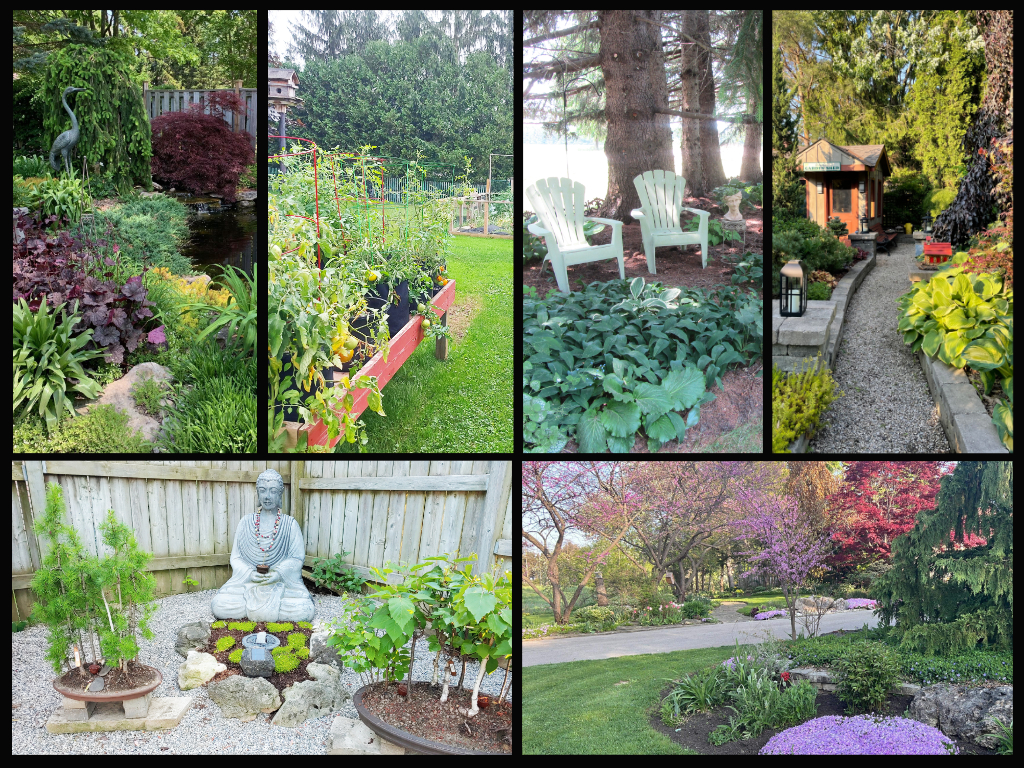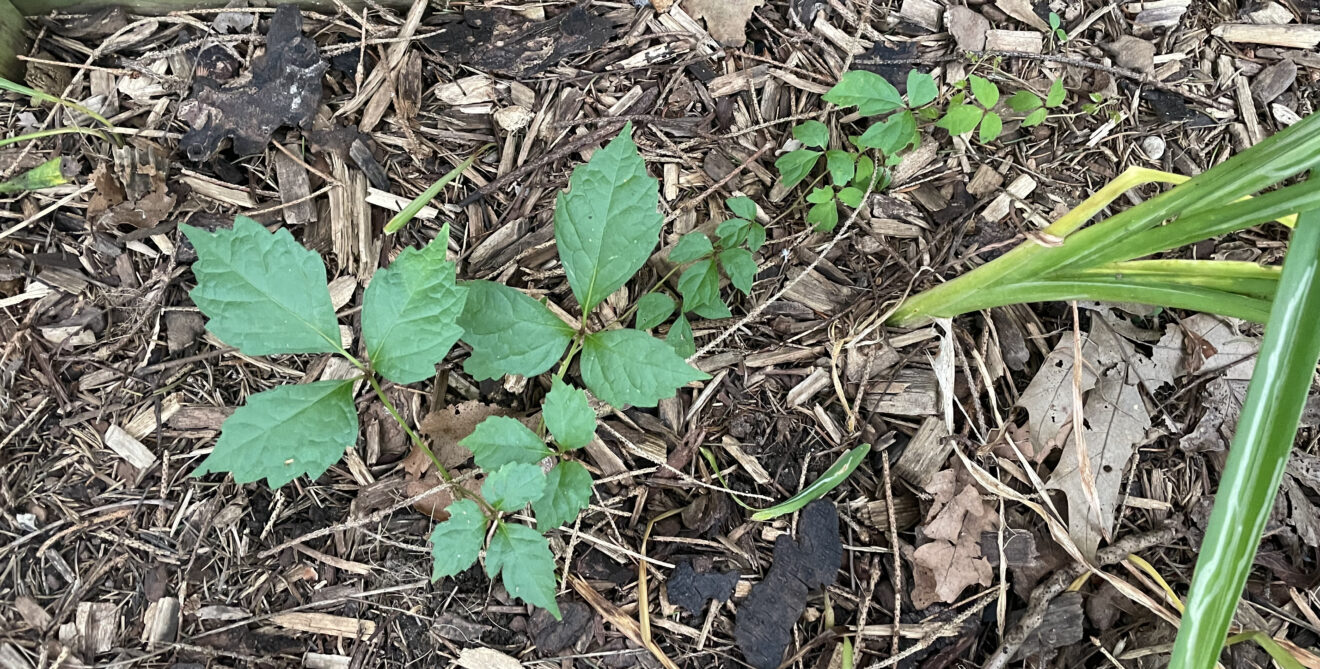|
|

|
In this issue: coping with heat & leaves of three
|
|
|
|
|
|
|
|
|
Dog Days of Summer
|

|
Lately our days have been hot and for most of us, very rainy. Ever wonder why some of your garden plants are still wilting even though we have had an abundance of rain regularly this summer?
|
It is amazing that we can have nice rainfall which soaks into the ground and yet when the sun comes out some plants will still wilt. Some seem to pout during the heat of the day and then perk up in the evening no matter how much water is provided. (The technical term for perky plants is turgor.)
|
Why is that?
|
It has to do with too much moisture loss. The plant is losing moisture faster through transpiration than it can take up through its roots.
|
|

|
|
All leaves are covered in tiny pores called Stomata. Each stoma is surrounded by guard cells that control the opening. During the day the stomata are open for the exchange of gasses (carbon dioxide in, oxygen out). The stomata also control the amount of moisture the plant releases (transpiration). If the day is overly hot, your plant can’t keep up which reduces the water pressure. When the water pressure is reduced those guard cells weaken and close up. Think of it like a tap. If the day is a nice temperature, not too windy, rainy or cloudy, the tap is wide open, full pressure. Water will flow freely from root to tip, gasses will be exchanged. When there is either excess heat or high wind, its like the tap is turned down, the pressure is reduced, the guard cells close, and moisture is conserved. As the sun goes down the temperature drops and your plant will be able to keep up and open the tap again. All of a sudden that limp plant is standing straight.
|
|
|
|
Is there anything you can do to help prevent the wilt?
Most plants can handle the daily wilt as long as adequate moisture is provided. If you feel your plant is really suffering, you can put a temporary shade cover-up. Just like we feel much better if we are under an umbrella, out of the sun — plants can feel better too. Shade cloth is a great answer. It comes in different thickness options which allow for varying amounts of light to penetrate and still allows water to pass through. You could erect a temporary umbrella or roof over your plant with the shade cloth preventing the harsh midday sun from hitting it. This also works really well to help new plants get established. The less stress a transplant feels, the faster it will settle into its new location.
|
What if your plant stays wilty?
|
|
|
|
If your plant does not perk back up in the evening or overnight, it’s time to look for another cause for the wilt. There are many other causes for plants wilting, too much water being one of them. With all the rain we’ve had, if your soil is really saturated and not draining, your plants roots could be drowning. Viruses (which can be very difficult to diagnose) can also cause wilt. And if that is not enough, pests can also damage your plant.
|
|
|
|
The next step
|
Our climate is changing and our temperatures are getting hotter. Because of this some of our plants may not be able to adapt. One solution that many people are trying is to put plants in that are more heat tolerant or are meant for a slightly warmer zone in an effort to adapt to the changing environment. We may find that we need to change our way of thinking when designing our landscapes.
|
|
|
|
|
|
There's still time to get your tickets for this years Bloomin' Tour.
Here's a sneak peak of a couple of the gardens.
|
|

|
|
|

|
|
|
|
|
Leaves of Three
|

|
If you’ve heard the saying "leaves of three let it be.” You probably know I’m talking about Poison Ivy. Many of us think of Poison Ivy as being something we should worry about when hiking or camping in the wilderness. Something we should watch for when duty calls and you might decide to detour off the beaten path. It’s not …
|
|
|
|
|
|
It's Peach Season!
Here's a recipe from the Bernardin website for
Peach Jam
|
|
|
- 4 cups (1000 ml) peeled, 1/8in slices of peaches
- 6 cups (1500 ml) granulated sugar
- 4 tbsp (60 ml) lemon juice
- 1 pouch (85 ml) BERNARDIN® Liquid Pectin
|
|
|
- In a large, deep stainless saucepan, alternately layer peaches and sugar. Cover and let stand at room temperature for 4 to 6 hours.
- Place 8 clean 250 ml mason jars on a rack in a boiling water canner; cover jars with water and heat to a simmer (180F/82C). Set screw bands aside. Keep jars hot until ready to use.
- Preheating Bernardin® lids is not advised. The sealing compound used for our home canning lids performs better at room temperature than it does pre-heated in simmering water (180°F). Simply wash lids in hot, soapy water, dry, and set aside until needed. Preheating can lead to less vacuum being achieved during water bath canning, and to buckle failures during pressure canning.
- Add lemon juice and ½ tsp (2 ml) butter to reduce foaming (optional) to marinated peach-sugar mixture. Over high heat and bring mixture to a boil, stirring constantly. Immediately stir in liquid fruit pectin. Return to a full rolling boil that cannot be stirred down and boil hard 1 minute, stirring constantly. Remove from heat and skim foam.
- Ladle hot preserves into a hot jar to within 1/4 inch (0.5 cm) of top of jar (headspace). Using nonmetallic utensil, remove air bubbles and adjust headspace, if required, by adding more jam. Wipe jar rim removing any food residue. Centre hot sealing disc on clean jar rim. Screw band down until resistance is met, then increase to fingertip tight. Return filled jar to rack in canner. Repeat for remaining jam.
- When canner is filled, ensure that all jars are covered by at least one inch (2.5 cm) of water. Cover canner and bring water to full rolling boil before starting to count processing time. At altitudes up to 1000 ft (305 m), process – boil filled jars – 10 minutes.
- When processing time is complete, turn stove off, remove canner lid, wait 5 minutes, then remove jars without tilting and place them upright on a protected work surface. Cool upright, undisturbed 24 hours; DO NOT RETIGHTEN screw bands.
- After cooling check jar seals. Sealed discs curve downward and do not move when pressed. Remove screw bands; wipe and dry bands and jars. Store screw bands separately or replace loosely on jars, as desired. Label and store jars in a cool, dark place. For best quality, use home canned foods within one year.
|
|
|
|
|
Community Connections - Want more? Check these out
|
|
|
Releaf Stratford & Stratford Master Gardeners
Native Plant Sale
|
August 5th & 6th from 9:00am-noon
|
|
289 Huntingdon Ave, Stratford
|
Eldon House Bouquet Building
|
August 12 and September 10th from 10:00am-noon
|
|
Learn how to build a bouquet using flowers from the Eldon House garden.
|
Friends of the Pinery Native Plant Sale
|
September 30th from 9:00am-noon
|
|
10035 Museum Road, Grand Bend
|
|
You can also order online ahead for pick-up that day
|
|
|
|
|
|
We love to hear from gardeners and answer questions. Don't be shy.
We were all new to this once!
|
  
|
|
|
|
|
Want to Subscribe?
|
If this was forwarded to you, you may wish to subscribe to our next newsletter.
|
|
|
|
|
|
|
|
|
|